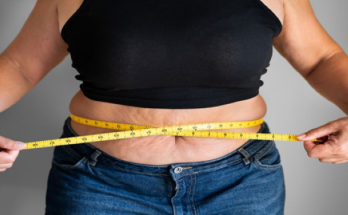If there’s one thing all new parents quickly learn, it’s that milk (breastmilk or formula) leaves a lot of washing up to do. Bottles, teats, and pump parts are all likely to house leftover milk, and unfortunately, that’s exactly where bacteria love to grow.
“Having a baby is always a learning curve, even if it isn’t your first. Family and friends are always there to advise about baby prams, clothing, perhaps even which diapers to use, but milk residue left over in a bottle doesn’t usually make it to the top of the list,” explains Catherine Oluwadare, brand manager for Milton. “This is something that is learnt on the go, and when advice is specifically sought after. But what parents soon learn is that when it comes to sterilising, it is non-negotiable.”
Sterilising isn’t just about “being clean”, it’s about wiping the slate completely clean of bacteria, viruses, and fungi, the full microbial line-up. And because milk is such a rich growth medium, even a tiny trace can multiply in bacteria surprisingly fast.
Rinsing in hot water might look like enough, but science says otherwise, especially during a baby’s first 12 months when their immune system is still getting up to speed. Sterilising bottles after every feed significantly reduces the risk of tummy bugs, vomiting, and diarrhoea. It is your daily invisible safety net for your little one.
There are different ways for parents to sterilise their baby’s bottles:
1. The classic boil
- How: Pop your bottles, teats, and caps into a pot of boiling water for at least ten minutes.
- Why it works: At 100 °C, heat penetrates and destroys bacterial proteins and enzymes.
- Best for: Low-tech, budget-friendly households.
- Watch out for: Over time, boiling can make plastic cloudy or weaken teats, so be sure to keep an eye on wear and tear.
2. Steam power
- How: Steam is the modern parent’s time-saver. Microwave sterilisers can blitz bacteria in as little as 3 to 6 minutes, while electric countertop units run longer but keep bottles sterile for up to 24 hours if the lid stays shut.
- Why it works: Steam transfers heat faster than dry air, making it deadly to microbes in minutes.
- Best for: Busy parents who want a quick option.
- Watch out for: You’ll need access to power, and it’s worth checking your bottles are steam safe.
3. Cold water and tablets: The “Milton Method”
- How: Mix sterilising tablets or fluid with cold tap water and submerge everything for 15 to 30 minutes.
- Why it works: The solution chemically inactivates bacteria, viruses, and fungi.
- Best for: Travelling, camping, or when there’s no reliable power source (loadshedding).
- Watch out for: Precise measuring is key, but not to worry, the Milton’s cap provides a measuring option.
4. UV-C light
- How: Using ultraviolet light to sterilise bottles feels like something from a sci-fi film, but it’s growing in popularity. UV-C light damages microbes’ DNA, stopping them from multiplying.
- Best for: Parents looking for a dry method.
- Watch out for: UV only works on surfaces it can “see,” so every part needs to be exposed.
No matter the sterilising method you use, make sure to:
- Wash your baby’s items with hot, soapy water before you sterilise; sterilising works best on clean surfaces.
- Clean bottles, teats, etc. after every use.
- Be consistent. Germs don’t take breaks.
- Check that your baby’s bottles and teats are still in good condition. Cracks, scratches, or cloudy plastic can harbour bacteria, no matter how much you sterilise.
Sterilising bottles might feel like yet another item on the endless new-parent to-do list, but it’s one of the simplest ways to keep your baby’s gut healthy in that vulnerable first year.
For more information, please visit Facebook: www.facebook.com/MiltonSouthAfrica or Instagram: www.instagram.com/miltonsouthafrica/




